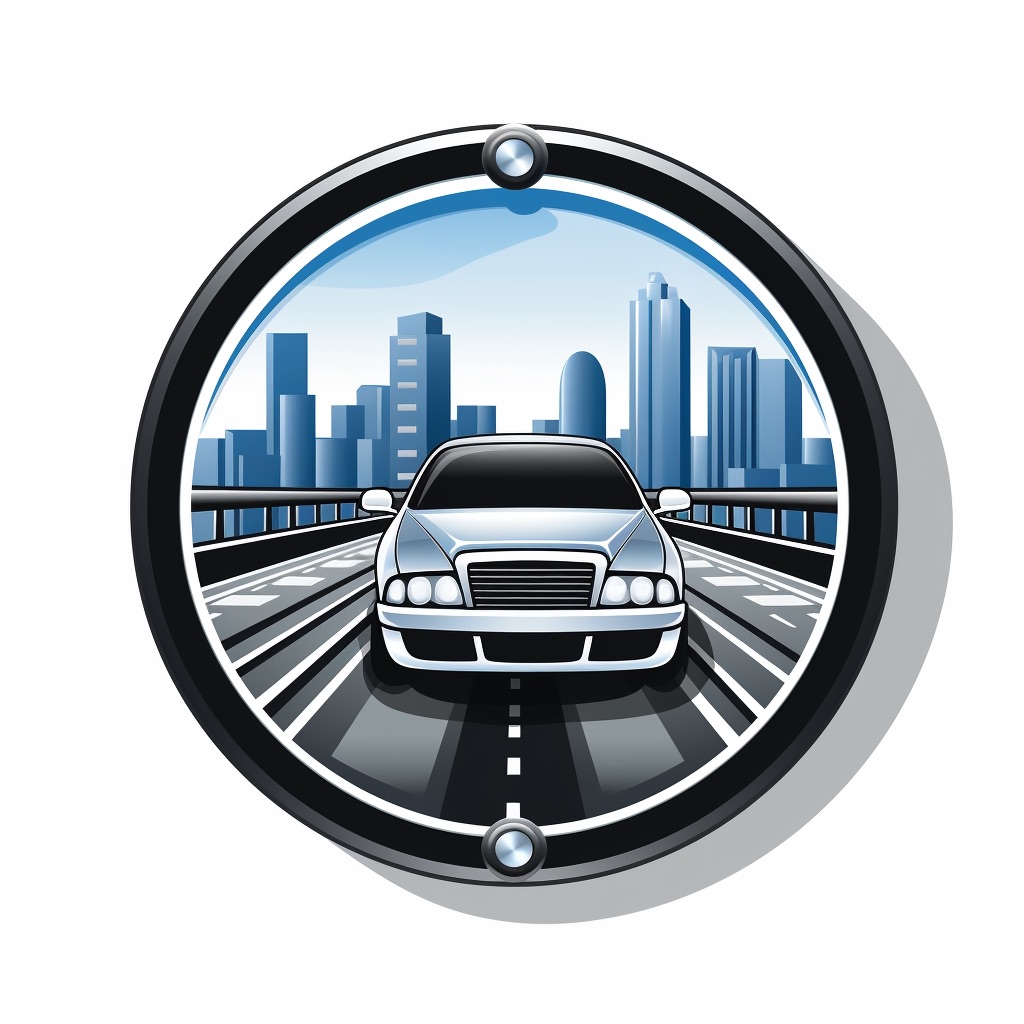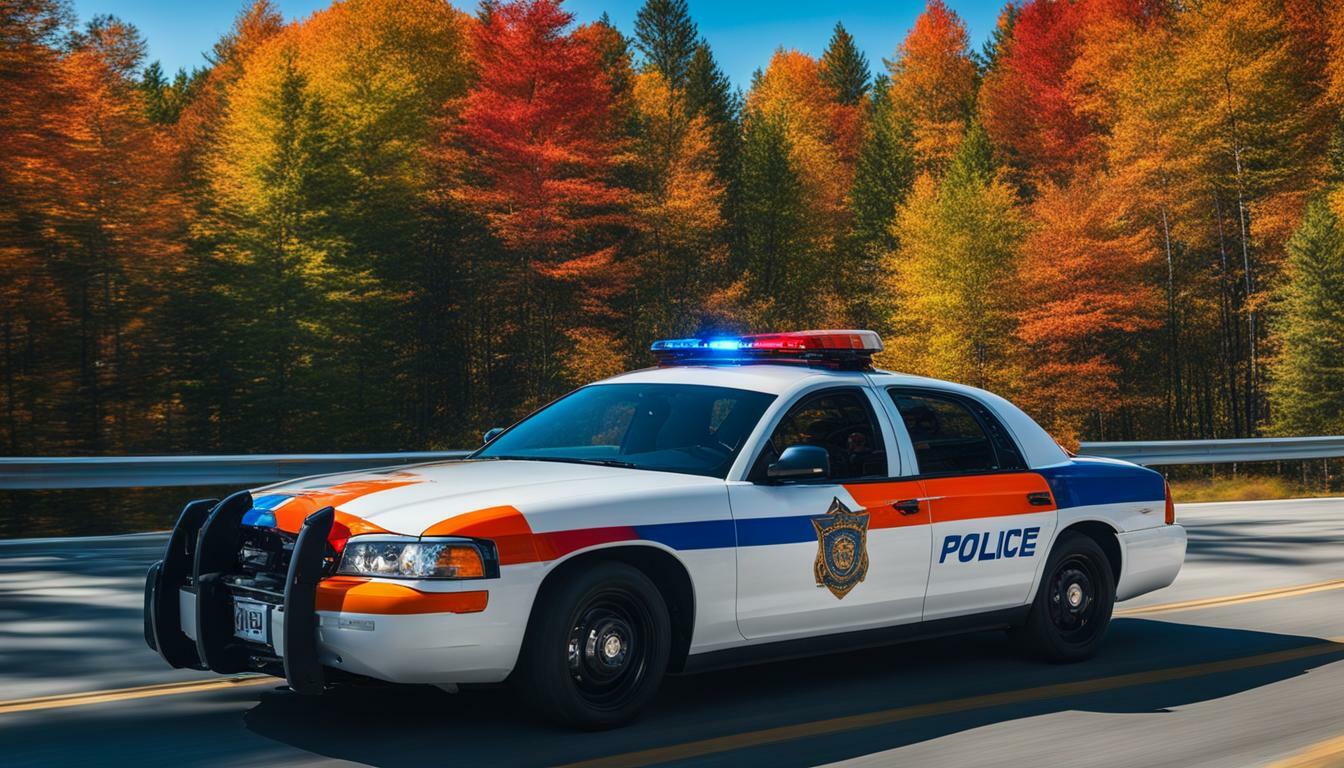Stay updated with your Minnesota Police Traffic report and ensure a safe and smooth journey in Minnesota. The Minnesota Police Traffic report provides information on how to request and obtain a copy of a police report or a citizen report filed after a traffic crash. By following the simple process, you can access crucial crash information and fulfill your legal responsibilities as a driver in Minnesota.
Key Takeaways:
- Obtain a copy of a police report or citizen report after a traffic crash in Minnesota
- Complete a Crash Record Request Form and pay a $5 fee
- Authorized requestors, such as drivers, passengers, or owners of damaged property, can access crash information
- The Traffic Safety Unit in the Office of Traffic Engineering maintains a crash database for safety program planning
- Understand your legal responsibilities if involved in a motor vehicle crash, including stopping at the scene and providing information
Requesting a Traffic Report in Minnesota
If you need to obtain a copy of a police report or citizen report after a traffic crash in Minnesota, follow these steps to request your traffic report.
- Complete the Crash Record Request Form: To initiate the process, fill out the Crash Record Request Form, which is available online on the official website of the Minnesota Police Department.
- Pay the $5 Fee: Along with the completed form, you will need to pay a $5 fee. This fee helps cover administrative costs involved in processing your request.
- Authorized Requestors: The crash information is accessible to authorized requestors, including drivers involved in the crash, passengers, and owners of damaged property. Make sure to provide all the necessary details on the form to establish your eligibility.
The Minnesota Police Traffic report also mentions the Traffic Safety Unit, which plays a crucial role in maintaining crash data for safety program planning. This unit is part of the Office of Traffic Engineering and ensures that accurate and up-to-date crash information is available to aid in traffic safety initiatives.
Remember, in addition to requesting your traffic report, it is important to fulfill your legal responsibilities if you are involved in a motor vehicle crash. This includes stopping at the scene, providing necessary information, and submitting a Minnesota Motor Vehicle Crash Report if required. It is also recommended to notify your insurance company and seek medical exams if necessary. Furthermore, the report provides information on towing services and vehicle releases, which can be helpful in case your vehicle needs to be towed after the accident.
| Steps to Request a Traffic Report in Minnesota |
|---|
| 1. Complete Crash Record Request Form |
| 2. Pay the $5 Fee |
| 3. Authorized Requestors: Provide necessary details |
| 4. Receive your traffic report |
Legal Responsibilities and Crash Information
When involved in a motor vehicle crash in Minnesota, it’s important to understand your legal responsibilities and how to report the incident accurately. Following the appropriate procedures not only helps ensure your safety and the safety of others involved but also allows for the proper handling of the situation and any potential insurance claims.
According to Minnesota law, if you’re involved in a crash that results in injury, death, or damages exceeding $1,000, you must stop at the scene and provide your name, address, vehicle registration number, and driver’s license information to other parties involved, as well as to law enforcement if they arrive at the scene. It’s crucial to stay at the scene until all necessary information has been exchanged, unless immediate medical attention is required.
If law enforcement doesn’t respond to the crash or the damages are less than $1,000, you may still need to report the incident by completing a Minnesota Motor Vehicle Crash Report. This report should be submitted within 10 days of the crash to the Minnesota Department of Public Safety’s Driver and Vehicle Services Division.
Who Can Access the Crash Information?
Once the crash report has been filed, certain individuals or entities have the authority to access the information. Authorized requestors can include drivers, passengers, or owners of damaged property who need the crash report for insurance claims or legal purposes. Additionally, the Traffic Safety Unit in the Office of Traffic Engineering maintains a crash database and utilizes the crash data for safety program planning to improve traffic conditions and prevent future incidents.
It’s essential to follow the appropriate legal guidelines when involved in a motor vehicle crash in Minnesota. By understanding your responsibilities and reporting the incident accurately, you contribute to the overall safety and well-being of everyone on the road.
| Key Information | Details |
|---|---|
| Reporting Threshold | Crashes resulting in injury, death, or damages exceeding $1,000 |
| Reporting Procedure | Stop at the scene, provide necessary information, and submit a Minnesota Motor Vehicle Crash Report if applicable |
| Authorized Requestors | Drivers, passengers, or owners of damaged property for insurance claims or legal purposes |
| Crash Data Management | Traffic Safety Unit in the Office of Traffic Engineering maintains a crash database and utilizes the data for safety program planning |
Additional Considerations and Resources
In addition to reporting the crash and fulfilling legal responsibilities, there are other important considerations and resources to be aware of in Minnesota.
Firstly, it is crucial to stay updated on Minnesota traffic updates and road conditions, especially after a traffic incident. Monitoring the latest information can help you plan your travel routes and avoid potential congestion or hazardous areas. Stay informed about road closures, construction zones, and any other factors that may impact your journey.
Secondly, if you have been involved in a traffic crash, it is essential to notify your insurance company promptly. They will guide you through the claims process and help you understand your coverage. Providing them with accurate and detailed information about the incident is vital for a smooth claim resolution.
Lastly, if your vehicle requires towing or is impounded as a result of the crash, it is important to know the procedures for vehicle releases. Contact the appropriate authorities or towing services to understand the necessary steps to retrieve your vehicle. Be aware that there may be specific requirements and costs associated with the release, so it’s advisable to inquire about these beforehand.
Remember, by staying informed about traffic updates, notifying your insurance company, and understanding the process for vehicle releases, you can navigate the aftermath of a traffic crash more effectively and ensure a smoother recovery.
FAQ
Q: How can I request a copy of a police report or citizen report after a traffic crash in Minnesota?
A: To request a copy of a police report or citizen report after a traffic crash in Minnesota, you need to complete a Crash Record Request Form and pay a $5 fee.
Q: Who can access the crash information?
A: Authorized requestors, such as drivers, passengers, or owners of damaged property, can access the crash information.
Q: What is the role of the Traffic Safety Unit in the Office of Traffic Engineering?
A: The Traffic Safety Unit maintains a crash database and provides crash data for safety program planning.
Q: What are the legal responsibilities of drivers involved in a motor vehicle crash in Minnesota?
A: Drivers involved in a motor vehicle crash in Minnesota are legally obligated to stop at the scene, provide information, and submit a completed Minnesota Motor Vehicle Crash Report if certain conditions are met.
Q: Are there any additional considerations after a traffic crash in Minnesota?
A: Yes, after a traffic crash in Minnesota, it is important to notify your insurance companies, consider medical exams if necessary, and familiarize yourself with towing services and vehicle release procedures.

